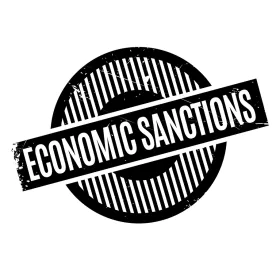Europe has come up with a nifty plan to help Iran buy and sell stuff outside the reach of U.S. sanctions. The problem is that the plan is a fraud magnet. How do we know? It’s been tried before, and the fraud was epic.
The plan is known as the “Instrument in Support of Trade Exchanges,” or “INSTEX.” Lots of smart people have been involved in creating the program. Let’s hope they’re not too young to remember 1995, when fraudsters first heard that the UN was setting up a program known as “Oil-for-Food.” Similar to INSTEX, Oil-for-Food was designed to allow a sanctioned country (in that case, Iraq) to sell oil on the world market in exchange for food, medicine, and other humanitarian goods. A 2005 independent audit of the program found a staggering variety of fraudulent schemes netting billions of dollars in income for illicit merchants, intermediaries, and the Saddam Hussein regime itself. If INSTEX is not careful, it could be the victim of similar scams.
Background: A brief timeline with links:
|
July 2015 |
The Iran nuclear agreement (known as the JCPOA) is signed. Iran agrees to eliminate its stockpile of medium-enriched uranium and take other actions to reduce its nuclear weapons program, in exchange for the suspension of U.S. and UN sanctions |
|
July 2017 |
Globaltradelawblog predicts that the United States will withdraw from JCPOA |
|
May 2018 |
U.S. Withdraws from JCPOA |
|
June 2018 |
EU announces INSTEX program is operational |
|
July 2019 |
Iran exceeds JCPOA uranium enrichment limit |
|
August 2019 |
Globaltradelawblog predicts INSTEX will be victimized by fraud |
|
July 2015 |
The Iran nuclear agreement (known as the JCPOA) is signed. Iran agrees to eliminate its stockpile of medium-enriched uranium and take other actions to reduce its nuclear weapons program, in exchange for the suspension of U.S. and UN sanctions |
|
July 2017 |
Globaltradelawblog predicts that the United States will withdraw from JCPOA |
How INSTEX is designed to work
The program sets up a trade finance system between Europe and Iran. EU exporters send goods to Iran, submit invoices to INSTEX, and receive payment from the INSTEX entity in Europe. Likewise, Iranian exporters send goods to Europe, submit invoices to the INSTEX-related entity in Iran, and receive payments in Iranian Rials. No U.S. dollars are involved, nor is the SWIFT system (both of which could subject the transactions to U.S. sanctions).

How fraudsters intend to work INSTEX
The idea has a certain merit. In theory, the system should help alleviate suffering in Iran by providing better access to humanitarian goods. But just as with Iraq nearly a quarter century ago, bad actors have no interest in doing good. In just one of many scams, Oil-for-Food fraudsters posed as sellers, submitting forged trade documents and getting paid for fake transactions. In the INSTEX context, it would look like this:

Lessons for the future
The fake seller scheme was only one of many attacks on the Oil-for-Food system. There was also massive fraud from the Hussein regime, which found multiple ways to skim illicit profits off the top of the program. With the passage of time, we expect fraudsters have only gotten more sophisticated.
Some have argued that the establishment of INSTEX is more political than economic. But the risk of fraud is real. Just ask the UN. Anyone interested in real humanitarian solutions for Iran should be wary. We’ll keep you posted here.



 />i
/>i
